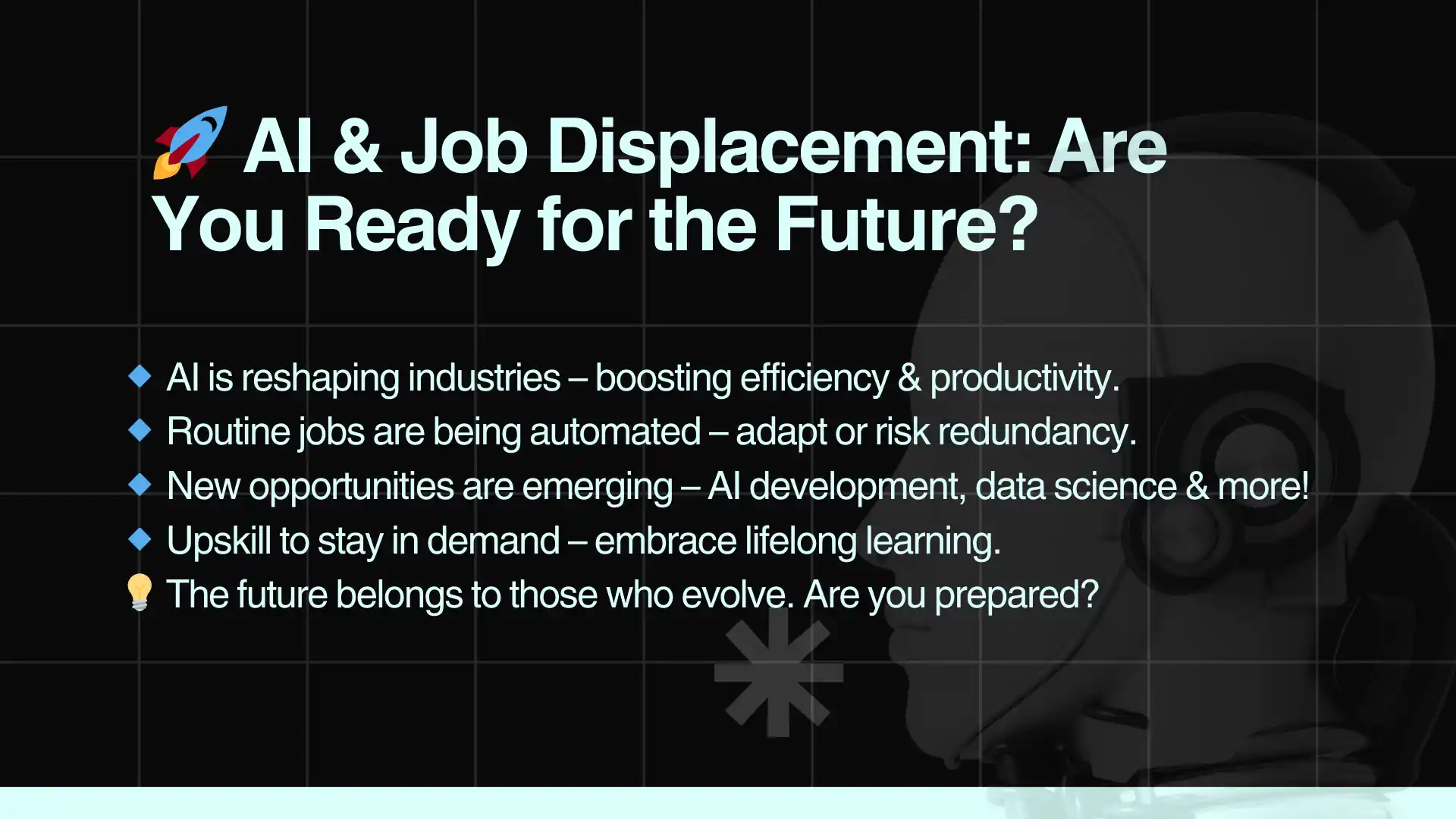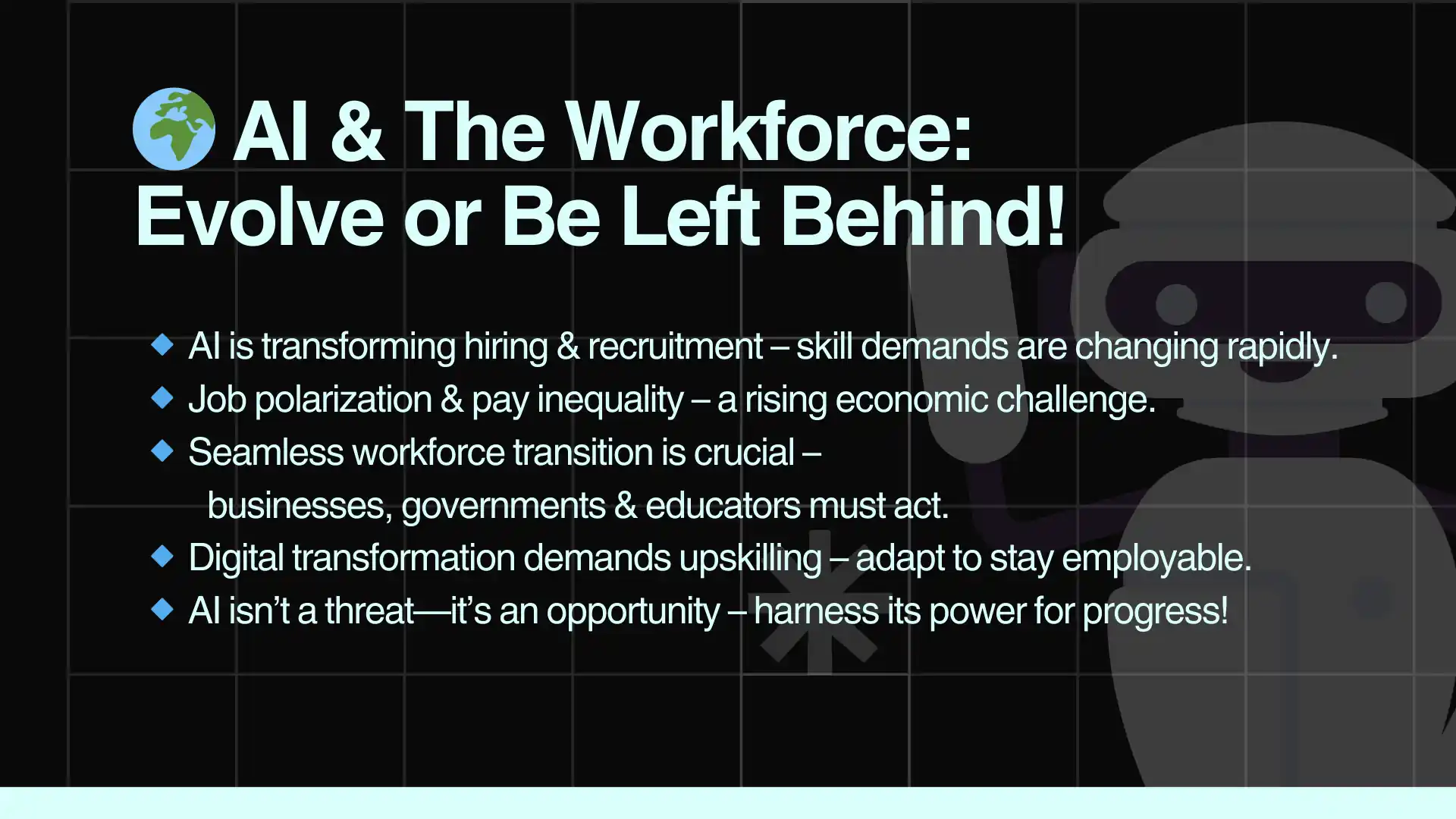Empowering Your Journey With Expert Assist
AI and Job Displacement: Navigating the Future of Work
Will AI replace the human workforce? Or enhance performance?
Technology and Innovation
Future Tech Trends
AP/Nandhini
.
Follow
6 min read
.
1 years ago
Why Trust Us
We uphold a strict editorial policy that focuses on factual accuracy, relevance, and impartiality. Our content, created by leading industry experts, is meticulously reviewed by a team of seasoned editors to ensure compliance with the highest standards in reporting and publishing.
The Rise of AI in the Workforce
Innovations in technology, especially Artificial Intelligence (AI), are revolutionizing industries by boosting efficiency and productivity. While AI has streamlined operations, it has also reshaped job markets, forcing industries and employees to adapt to new employment trends.
Employment Trends & Job Losses
The job market is experiencing a dramatic shift due to AI-driven automation. Algorithms and machine learning models are increasingly taking over roles that involve repetitive tasks, impacting industries like:
✅ Data Entry – AI can process, organize, and analyze data faster than humans.
✅ Manufacturing & Assembly Line Work – Robotics and automation have reduced human involvement.
✅ Customer Service – Chatbots and virtual assistants are handling queries efficiently.
While these advancements improve productivity, they also lead to job losses in roles that rely on routine and repetitive tasks. Employees in these sectors are at risk unless they adapt to evolving skill requirements.

The Shift Towards High-Demand AI-Driven Careers
Despite job losses in some areas, AI is also creating new job opportunities. The demand for technology-driven skills is on the rise, and professionals who upskill can secure roles such as:
🔹 AI Development & Machine Learning Engineering
🔹 Data Science & Big Data Analytics
🔹 Cybersecurity & AI Ethics Experts
🔹 AI System Design & Maintenance
To stay relevant, employees must embrace lifelong learning and continuously upgrade their skills to match the demands of an AI-driven job market.
Labor Force & Economic Impact
AI has transformed recruitment and hiring strategies, enabling businesses to:
✅ Automate Resume Screening & Candidate Matching
✅ Enhance Efficiency & Reduce Operational Costs
✅ Identify Skill Gaps & Predict Workforce Trends
However, with these benefits come challenges like job polarization and pay inequality. If left unaddressed, these issues could contribute to economic and social disparities.
Bridging the Gap: The Role of Businesses & Governments
To ensure a smooth workforce transition, collaboration is crucial. Governments, businesses, and educational institutions must work together to:
✔️ Provide Reskilling & Upskilling Programs
✔️ Develop Policies for Fair AI Integration
✔️ Support Employees in Transitioning Careers

Digital Transformation & Career Evolution
We are in the midst of a digital transformation where adaptability is key. Employees must rethink their career paths and continuously upgrade their skills to remain relevant. Employers, on the other hand, must support their workforce by introducing:
🔹 Mentorship & Training Programs
🔹 Flexible Work Arrangements
🔹 Opportunities to Transition into Emerging Roles
Embracing AI: The Future of Work
Rather than viewing AI as a job threat, it should be seen as an opportunity for growth. AI is reshaping the workforce, but it also has the potential to enhance human potential, drive innovation, and open doors to new career paths.
Key Takeaways:
✅ AI is automating repetitive tasks but also creating high-demand jobs.
✅ Employees must embrace continuous learning to stay relevant.
✅ Businesses & governments must collaborate to support workforce transitions.
✅ AI should be seen as a tool for empowerment, not a threat.
🚀 The future belongs to those who adapt. Are you ready to evolve with AI?
Read Full Story
Great learn! now some helpful content.
No Ctas Available
Trendings
#technology
#AI
#Artificial intelligence
#work automation
#job loss
#algorithm
#workforce disruption
#job redefinition
#economic impact
#Digital Transformation
See more
Subscribe to our newsletter.
Nostrud amet eu ullamco nisi aute in ad minim nostrud adipisicing velit quis. Duis tempor incididunt dolore.
- Weekly articles
- Non laboris consequat cupidatat laborum magna. Eiusmod non irure cupidatat duis commodo amet.
- No spam
- Officia excepteur ullamco ut sint duis proident non adipisicing. Voluptate incididunt anim.
